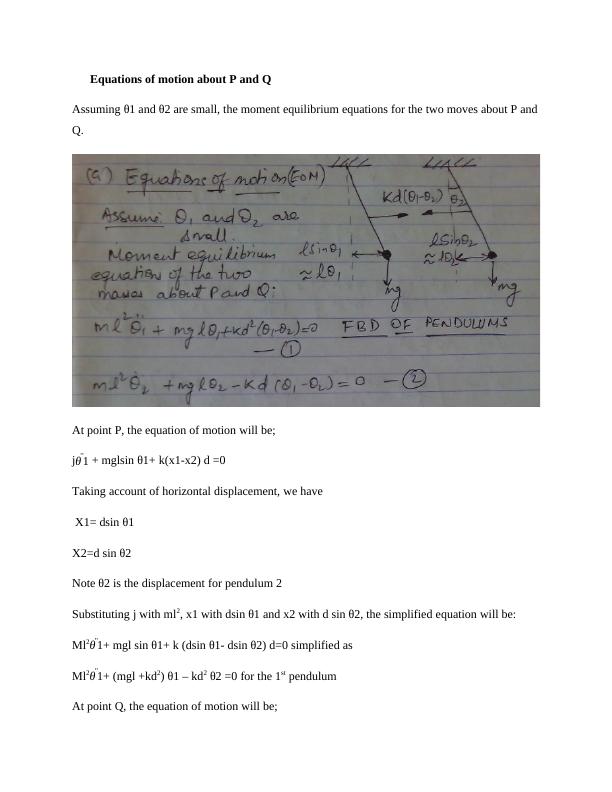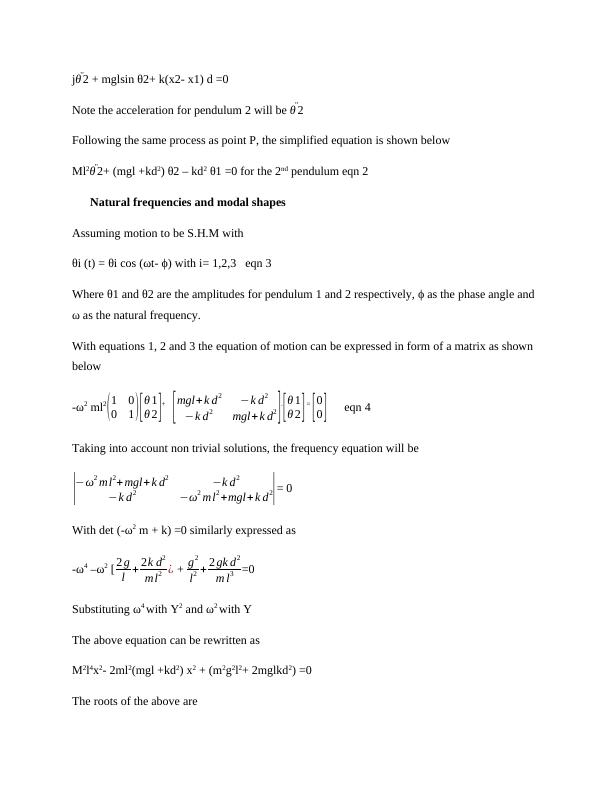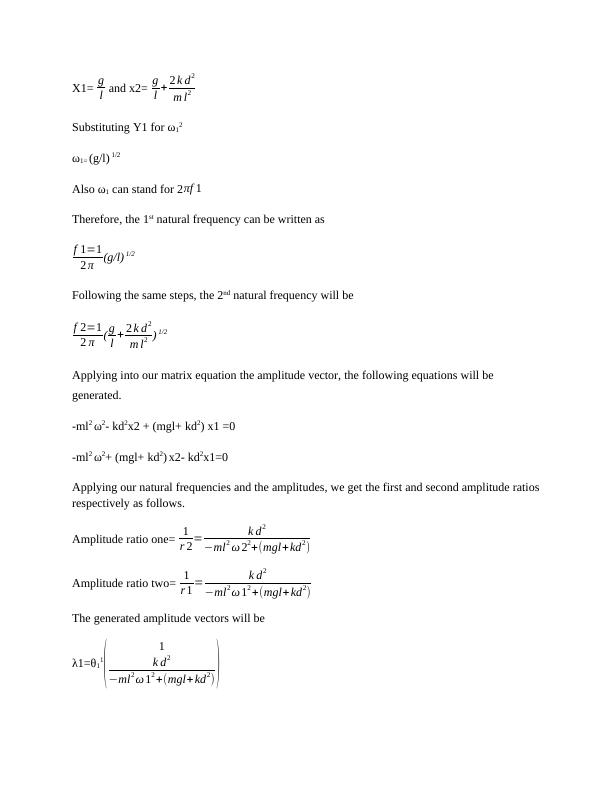ENMEC4060 Vibration and machine dynamics
10 Pages1151 Words89 Views
Vibration and machine dynamics (ENMEC4060)
Added on 2021-10-12
ENMEC4060 Vibration and machine dynamics
Vibration and machine dynamics (ENMEC4060)
Added on 2021-10-12
ShareRelated Documents
End of preview
Want to access all the pages? Upload your documents or become a member.
Applied Numerical Methods: Triple Pendulum Vibration Analysis
|15
|1932
|266



